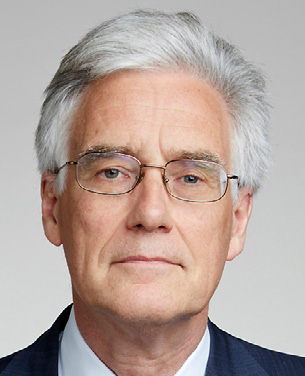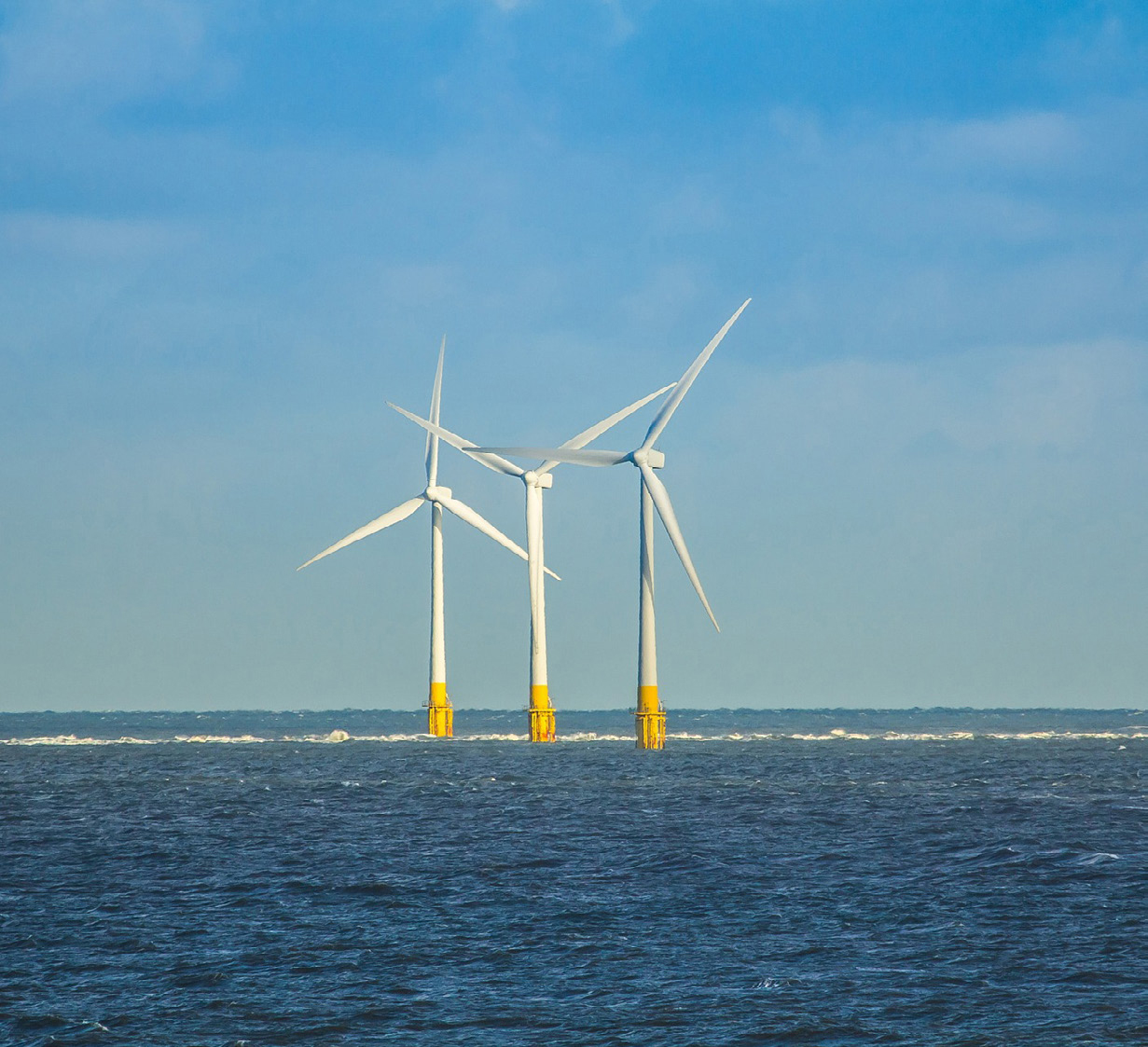FST JOURNAL
Mission Zero
DOI: https://www.doi.org/10.53289/MPTB5264
Priorities for creating a decarbonised world
Lord Turner

Lord Adair Turner chairs the Energy Transitions Commission, a global coalition of companies, NGOs and experts working to achieve a net zero economy by 2040. He is Chairman of insurer group Chubb Europe and on the Advisory Board of Board of Shanghai energy group Envision. From 2008-2013, Adair Turner chaired the Financial Services Authority, leading the redesign of global banking and shadow banking regulation. He chaired the Climate Change Committee from 2008 to 2012.
The work of the Energy Transitions Commission is global, so it is as much concerned with how China or India decarbonises as Europe or the UK. It has recently produced a report on finance to support the transition to net zero across the world1. The headline is that current investment of about $1 trillion per annum in different green technologies will have to rise to $3.5 trillion by 2030 and be maintained at that level, before slowly declining in later decades.
Of that, $2.4 trillion, or 70%, is investment in the power system: 40% in power generation and 30% in grids, transmission and distribution. It is easy to lose sight of the absolute centrality of building a much bigger and entirely zero-carbon electricity system: that is fundamental to all paths to net zero.
In some countries, such as Indonesia or India, the electricity systems will have to be up to eight times bigger than today. Our scenarios suggest global electricity production and consumption increasing from about 27,000 terawatt hours today to 90,000TWh or more by 2050. Developed countries will also see very significant growth in the electricity system. In the UK, an increase from 300TWh of consumption today to 600-700TWh or more can be expected by 2050.
The UK electricity system of the future may have a role for nuclear as baseload, perhaps providing 20% of the total. Offshore wind will be essential, because once in place, it supplies power for 5000-6000 hours per year on average. Solar, on the other hand, will only give 1500-2000 hours production per year in the UK.
The UK has a clear target of 50GW of offshore wind capacity by 2030: that could produce as much as 250TWh. This is likely to rise to 70GW by 2040. Now targets matter: it is important to establish Government targets for major infrastructure like offshore wind at least 10 years ahead, as this allows supply chains to develop based on market certainty.
Strategy
It is vital to have a clear strategy and to remove barriers that impede the speed of transition. The planning and permitting system is a case in point. That does not mean abandoning necessary environmental standards. However, it does mean making systems smarter, so that it does not take 11 years to deliver an offshore wind farm, for instance. Some of the most important challenges in electricity systems across the world and in the UK are not actually in generation itself. Often, the issues are to do with grids and balancing. A recent report estimates that 1000GW of renewable capacity is waiting for grid connections across the US and Europe.
The UK has the same problem. Grids are not being built fast enough to deal with new generation and new sources of demand such as heat pumps or electric vehicle charging. Ofgem must be given a mandate to regulate both distribution and transmission grids in a way which supports the transition to net zero. To do this, we must allow investment in grids ahead of demand rather than reactively.
Another big challenge across the world is how to balance supply and demand of electricity over days, weeks and months when, for example, the wind does not blow or the sun does not shine. In some places, the answer will be batteries. In places like India where the vast majority of the electricity capacity will come from solar, the key balancing challenges are diurnal rather than seasonal. Day/night batteries will play a major role in enabling air conditioning after the sun has gone down.
In the UK, the problem is very different. It is essentially about the variability of wind. As we develop more and more offshore and onshore wind as well as solar, renewables will eventually be providing around 70% of all our electricity. Yet there are two- or three-week periods when wind can drop significantly in the North Sea due to a blocking anticyclone over northwest Europe. This typically occurs just at the time when we have cold weather and electricity consumption goes up. A few months ago, between December and January, there was a period of cold, dry, windless weather. This was followed in January by an absolute bonanza of wind.
So the UK needs a national strategic plan to deal with that challenge. We may continue to need a large bank of gas turbines for this although whether they will run on hydrogen, or on natural gas with carbon capture and storage, is still to be decided. Whichever is chosen, the UK will need storage capacity either for CO2 or for hydrogen. Therefore, as a priority the UK needs to investigate geological storage capabilities and the ability to repurpose our gas reservoirs.
Buildings
In the Commission’s finance report, the second most important element was $500 billion for buildings. In the developing world, this fundamentally involves getting them ‘right first time’: well-insulated with good heating, ventilation and air conditioning systems (HVAC), etc. In this country it is primarily a retrofit challenge, albeit a substantial one. There are 28 million households in the UK, 23 million of which have gas boilers and each household will have to make a decision on what they are going to do in future.
Although it is common to talk about the hard-to-abate sectors of the economy being shipping or aviation or steel or cement, I have increasingly come to believe that the hardest to abate sector is actually residential homes. In the global steel sector, if the 50 top steel companies agree to do something it will happen. That is a much easier implementation challenge than getting 28 million households to make common decisions.
What is the solution? In the UK, if we go down the electric route, we will have to install one million heat pumps per annum for the next 15 years to end up with a decarbonised residential heat system. That in itself will require a much more strategic approach to finance.
Skills
It will also require a strategic approach to skills development. The Climate Change Committee in a recent report highlighted the huge job opportunities for plumbers, electricians and insulation installers needed to create a zero-carbon housing stock – some 200,000 extra jobs.
Yet those extra jobs are not going to appear immediately. The heat pump market is a seller's market not a buyer’s one at the moment.
 The output of wind turbines can drop significantly because of weather patterns, just when electricity demand rises.
The output of wind turbines can drop significantly because of weather patterns, just when electricity demand rises.
In many sectors of the economy, in particular industry, a clear and rising carbon price is a vital policy tool. But to make sure that carbon prices do not disadvantage carbon-intensive industries there must also be a coherent border carbon-adjustment mechanism, and here the UK’s approach should mirror as closely as possible the mechanism being put in place by the EU: without such a mechanism, there will not be a single steel plant operator left in Europe. Most companies operating in the UK want to be able to operate in Europe as well and will want a standardised system.
I am convinced that, at the global level, if we focus on the energy, building, industry and transport sectors of the economy, we will get to something pretty close to a net zero global economy by 2050 in the developed world and 2060 in most of the developing countries. Technologies will get us there.
But frankly we wasted 15 years after we really understood the challenge. The Stern Report on the global economics of climate change, and the UK Climate Change Act of 2006 were huge steps forward . But after the financial crisis of 2008, political focus switched to other issues and the Copenhagen Climate Conference of 2009 ended with a major setback to global progress. We wasted a great deal of time: we are behind where we should b, and we now need to catch up fast.
1 www.energy-transitions.org/publications/financing-the-transition-etc
